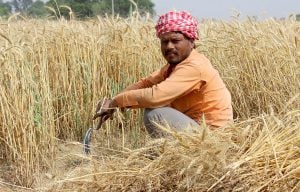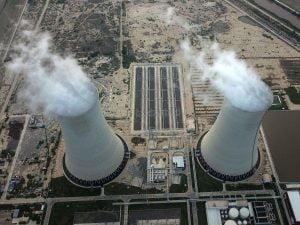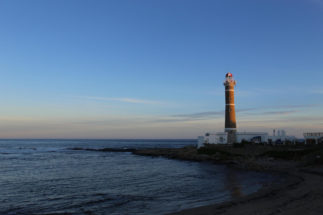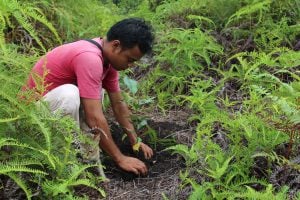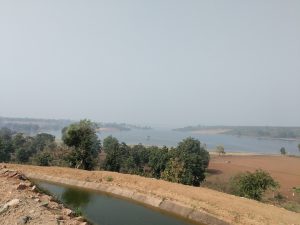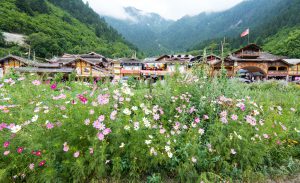Muhammad Arshad has no choice but to abandon the fields that his family has cultivated for generations. The persistent destruction of crops by wild boars has forced him to migrate from the mountains to the city, to serve as a private security guard at a bungalow.
The gloom is visible on his face. “I was quite happy with the earnings made through the growing of seasonal crops and vegetables. It fed my family,” said Arshad, who now lives in the Abbottabad district of Hazara in Pakistan’s Khyber Pakhtunkhwa province.
In the hilly, temperate Hazara belt of Pakistan, farmers and locals are puzzled and afraid as wild boars intrude into their agricultural land. Many had never seen boars before, and initially mistook them for bears. Now, with the threat well-established, farmers are switching to crops which are less appealing to the animal, in the hope that there will be less damage to the field. The local administration is considering providing arms to residents in order to battle the boars, despite them never having used a gun in their lives.
![A farmer standing in his field destroyed by a herd of wild boar in Bakot area of Nathigali in Abbotabad district [image by: Adeel Saeed]](https://dialogue.earth/content/uploads/2020/04/03.jpg)
Environmentalists believe the main reason behind the wild boar (Sus scrofa) migration to hilly regions is climate change, which has made the terrain a comfortable home for a species which is otherwise found in tropical and sub-tropical areas.
Warmer temperatures lure in the boar
According to Muhammad Aftab, an M.Phil scholar whose research thesis focused on the incidence of wild boar damage, the first wild boar was spotted in Galiyat in 2013.
“The first appearance was on a hill track in Abbottabad district, where a carcass of the animal was found on the road,” said Aftab. His research showed that apart from damaging farmland and crops, wild boars are also threatening the rich ecology of Galiyat by uprooting plants to eat the roots.
“The animal digs the soil with its strong hoof to reach the root and also causes erosion in the area, along with destroying the whole plant.”
These areas are recording higher temperatures in the summer months than ever before, with some locals saying the heat is forcing them to purchase fans — something they had never imagined would be needed in their cool, hilly region.
![An official of the agriculture department inspecting a farm destroyed by wild boar in Darband area of Manshera district [image by: Adeel Saeed]](https://dialogue.earth/content/uploads/2020/04/02.jpg)
As temperatures in Pakistan’s north west increase as a result of global warming, the wild boar sees the region as a comfortable stomping ground, not too different from its natural tropical habitat.
Noreen, who has supervised the research of students documenting the intrusion of the wild boar, described how the wild animal moved from one region to the next.
“It migrated from the suburbs of Islamabad and the adjacent Potohar region of Punjab to the Murree hills and then quickly spread into the entire mountainous region of Hazara because of the favourable environment,” she said.
Aftab Ahmad agreed with Noreen, and said the changing temperature has allowed some plant species of the tropical region, including the chir pine trees, to grow in Galiyat. This tree, which grows from Tibet and Afghanistan through Pakistan, across northern India, Nepal and Bhutan, is generally found at lower altitudes than other pines in the Himalaya.
Noreen said urbanisation, huge garbage dumps in hill stations and the development of a road network have also paved the way for the animal’s migration.
“The wild boar is not only confined to Galiyat, Margalla hills and Hazara, but is fast spreading in the whole mountainous region, with an alarming increase in its population.”
Grow crops the wild boar dislikes
Sajid Sidiq, the agriculture officer in Abbottabad, said farmers in the Hazara belt, Margalla hills and adjacent Kashmir region are bearing the brunt of this climate change-induced migration.
“The farming community in Hazara is perturbed and in a deep financial crisis due to the arrival of feral pigs in their areas and the resulting damage to crops,” Sidiq added.
![A team comprising of officials from the agriculture department and the Deputy Commissioner's office inspect farm land rampaged by wild boars in Darband area of Manshera district [image by: Adeel Saeed]](https://dialogue.earth/content/uploads/2020/04/01-copy.jpg)
“When I encourage farmers to increase wheat cultivation in their area, they have a surprising response. They say, ‘our efforts and investments have been wasted and you are asking for higher production?’”
In Pakistan-administered Kashmir, a landlord in the Deva Batala area of the Bhimber district, Sikandar Ahmad said he owns 62 acres of land, but cannot utilise it for cultivating maize and potato, his crops of choice, because of the attacks by herds of pigs.
“I have sown mustard instead because wild boar don’t like this crop as much as they do potato and maize. Still, I expect this field to be damaged,” he said.
“The difference in profit between cultivating mustard and potato is around PKR 1 million (USD 6,300) per season, which I lose because of this wild animal,” Sikander added.
Hunting as a solution
Amina Sardar, a politician from Abbottabad and former member of the Khyber Pakhtunkhwa assembly, said the issue of crop destruction by boars is very serious and has affected a large number of people in the mountainous region.
“About 50% of the farmers in my own constituency have stopped farming due to consistent losses,” she said, adding that livestock and human life are also under threat.
In the hope of alleviating farmers’ financial losses, Sardar raised the issue in the Khyber Pakhtunkhwa assembly, which resulted in a meeting in early March under the chairmanship of the district director of agriculture.
![A meeting held on February 2020 at a school in Darband Manshera district to inform farmers regarding wild boar control [image by: Adeel Saeed]](https://dialogue.earth/content/uploads/2020/04/05.jpg)
“We are also considering granting permission to the affected farmers in the northern region to use guns without a license for the protection of their crops. The license fee is in the thousands,” said Muhammad Niaz, a divisional wildlife officer in the province.
“The Wildlife and Biodiversity Act 2015 also has a provision that allows the killing of ‘vermin species’ after a `no objection certificate’ is given by an authorised officer,” Niaz added.
During the consultation process, authorities from the wildlife, livestock and municipality departments agreed that chemicals should not be used for the culling of the wild boar and that the animal will be killed through shooting, with the municipal authorities responsible for disposing the carcass.
It has also been decided that ‘pig control committees’ will be established in the hardest hit areas, where locals will be engaged to shoot animals.
“We are considering rewards for locals who kill the wild boar and present evidence,” said Naveed Iqbal, the district director of agriculture.
However, Amina Sardar said locals killing boars is not a solution. “The people of the northern belt are not used to keeping or using arms,” she said.
A similar plan for registered hunters to kill boars is being chalked out in Galiyat, where a wildlife department proposal details how 500 hunters and a PKR 2 million (USD 12,500) budget will bring relief to the farming community.
As authorities and locals gear up to battle the boar, Sajid Sidiq said more research is needed to understand how the boar has intruded into farmland.
“Given the gravity of damage to the crops, ecology and economy in the Hazara belt, it is the need of the hour to conduct a thorough survey to find out the reasons behind the migration of the wild boar into temperate regions. Measures must be taken to provide better protection and relief to the farming community,” said Sidiq.
![<p>A picture of a wild boar captured on camera traps installed by WWF-Pakistan to monitor movement of leopards in Galliyat [image courtesy: WWF-Pakistan]</p>](https://dialogue.earth/content/uploads/2020/04/04-300x200.jpg)

